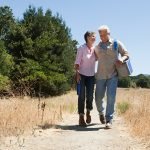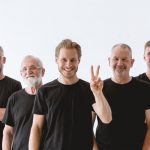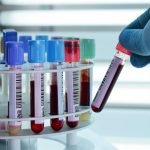Students Bring Medicine to the Streets at Homeless Youth Clinic
David punched a locker in anger, then felt the pain in his hand continue for weeks. Student clinicians from Bastyr University helped him diagnose the injury and gave him hydrotherapy treatments to promote tissue healing.
Monica almost ran out of the room at the prospect of acupuncture needles, then grew to trust her clinician and agreed to try the therapy, which she now enjoys.
Other patients receive counseling, nutritional supplements, testing for sexually transmitted diseases or treatments for warts. Some receive shoes and sleeping bags. Occasionally, after consideration by clinical faculty, a patient receives advice on safe-needle exchanges for drug use.
This isn’t a typical health clinic. At Seattle’s 45th Street Neighborcare Clinic on Thursday nights, the patients, ages 12 to 23, are homeless or living in transitional housing. They meet a team of Bastyr student clinicians who work together with medical doctors (MDs), physician assistants, acupuncturists, nurses and dentists, providing health care that recognizes that life isn’t always as it should be.
Upper-level students from Bastyr’s Doctor of Naturopathic Medicine program focus on harm-reduction care at the homeless youth clinic. At the heart of their care is a simple message: Our medicine is for you. You deserve the same high quality of care as anyone else.
“We believe a therapeutic relationship is an important part of the process,” says Brendan Smith, ND (’09), who supervises the shift as a Bastyr core faculty member. “There are not many stable things in their lives. It can be hard to earn their trust. We can’t fix the majority of problems, so the relationships we build are key in supporting their health.”
Youth who are homeless face higher rates of mental illness, addiction and STDs than other Americans, according to the U.S. Centers for Disease Control and Prevention. They are frequently victims of rape. For those sleeping in public or unsafe places, sleep problems and back pain are common.
For Bastyr students, the homeless youth clinic is vastly different than Bastyr Center for Natural Health, the University’s Seattle teaching clinic. At Bastyr Center, clinicians typically have the option of multiple visits with a patient. At the homeless youth clinic, 50 percent of patients visit only once, so clinicians must do their best to help immediately.
“You learn to use what you have, to get everything possible at that visit because it might be the only one,” says Meghan Kemnec, a fourth-year naturopathic medicine student.
In the case of STDs, that might mean giving antibiotics for the patient and their partner both, since the partner might not have access to medical care. Clinicians learn street drug and sex lingo so they can converse with patients without asking them to explain terms.
Trauma-Informed Care
As with all naturopathic medicine, the focus is on the foundations of wellness: things like nutrition, sleep, exercise and stress. But clinicians recognize that patients may not have control over where they sleep or what they eat. And dealing with trauma from abuse or sexual assault may be a more urgent concern than anything else, so clinicians connect them with other resources.
“They’re coming from experiences that most of us don’t have,” says Lisa Yang, a fourth-year naturopathic medicine student. “I learned a lot from them.”
Some patients just want annual checkups or tips for healthier living. Kemnec says she’s inspired by the way young patients facing adversity are proactive about their health. David (we have changed the names of patients in this story), says he was skeptical about naturopathic medicine at first but came to trust Dr. Smith. For his difficulty sleeping, clinicians first suggested meditation, which didn’t help, and then suggested melatonin, which did.
“It works well enough that Dr. Smith has become my first stop when I’m feeling pain or under the weather,” David says.
Monica says the atmosphere keeps her returning to the clinic, where clinicians, patients and volunteers joke around and share snacks in the waiting room.
“They’re really helpful,” she says. “I’ve come here pissed off, definitely, on bad days. They cheer me up. There’s just a good energy here.”
Compassionate Care
Dr. Smith says the harm-reduction approach can be an adjustment to students, who would like to help patients address all of their health problems. Recommending a needle exchange is a difficult choice, but the right one for a patient using heroin who isn’t ready to stop, he says.
As a teenager growing up in Seattle, Dr. Smith knew kids like the ones he now treats. Given the disrespect that homeless youth face in many public settings, he says providing a peaceful place to talk and be addressed with dignity is an important part of his service.
He says working with homeless youth forces him to be less formal than he would in other settings. He teaches clinicians to address patients by their street names, to use respectful transgender pronouns and to avoid medical jargon.
“They’re not impressed by our big words,” he says.
Team Approach
As with Bastyr’s other off-site community care clinics, the 45th Street Clinic lets students train with a variety of patient types. Other community clinics focus on homeless adults, HIV/AIDS patients, low-income patients, multiethnic groups, children and seniors. Bastyr’s presence at 45th Street is funded by the uncompensated care funds at Bastyr Center.
The 45th Street Clinic also gives students experience in an integrative health care practice. NDs, physician assistants and counselors refer patients to each other as each case demands. Patients can see multiple practitioners on the same night, without scheduling ahead of time.
“The whole clinic is really a cohesive unit,” says Kemnec. “That was the first time I saw an integrated clinic with such a good referral basis.”
Medical residents from other schools and hospitals spend one-month rotations at the clinic. Because Bastyr clinicians stay for an academic quarter, they often form closer bonds with patients, says Katie Haas, a Neighborcare volunteer.
“This is what Neighborcare is about,” she says. “You have UW dental students, you have Swedish Hospital residents and you have Bastyr students all working together. They get experience with difficult patients, and we get health care providers.”
Courtesy of Jon Hiskes, Bastyr University
Originally published at: http://www.bastyr.edu/news/general-news-home-page/2014/05/students-bring-medicine-streets-homeless-youth-clinic?utm_source=Facebook&utm_medium=Social&utm_campaign=45thStreetClinic







